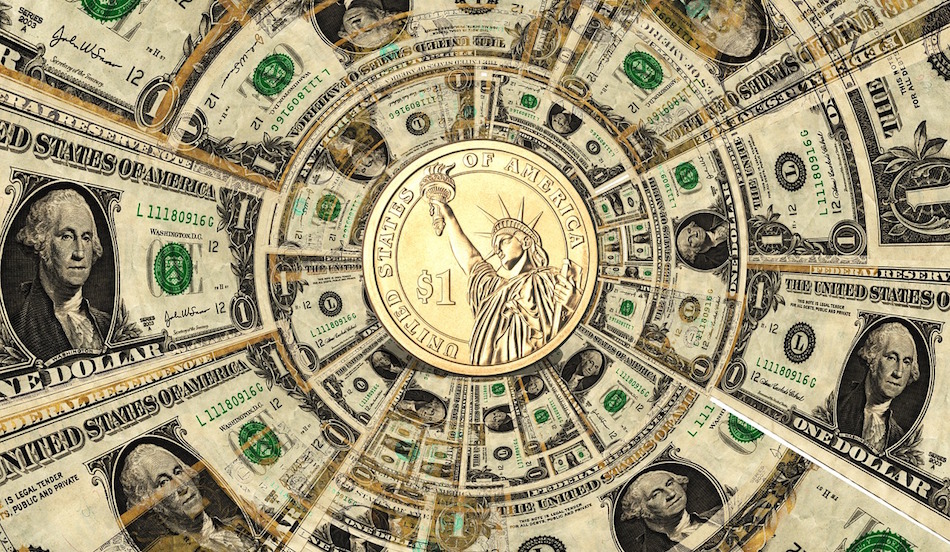
Get yourself invited to the Mad Hatter’s tea party. Photo credit : axel80 / 123RF Stock Photo
Raising series A funding. That’s the stuff founder dreams are made of: VC money that brings validation and gets them one step closer to joining the big leagues. That’s when they are no longer asking friends and family for seed investment, and when they can actually think about setting up that funky office.
Series A is all that, but it is also another thing. For a founder, it is the litmus test affirming that they have potential, and proof that they and their company have passed the background checks and scrutiny of a VC.
As any entrepreneur worth their salt will tell you, the journey from seed-funded to series A is fraught with meetings, rejections, and often, cold shoulders, leaving young founders confused about how to approach investors, how to prep, and even when to knock on their doors.
At TIA Jakarta 2016, our conference that took place on November 16 and 17*, investors from Venturra Capital and Monk’s Hill Ventures shared a no-BS approach to raising series A funding.
1. They are in it for money
Chances are high that your seed investor is the nice guy – the mentor who has given you some money to try out your idea, and will offer a long rope for you to experiment. The VC has a different agenda. “It is very important to understand that VCs invest in startups to make money.
The lights in our eyes twinkle when we see a total addressable market of $1 billion.
We need to generate capital gains to return the money at least 3 to 4 times of what we manage back to our investors. Sometimes people forget we are an institutional investor that aims to have a financial gain,” said Raditya Pramana of Ventura.
This translates to: do your homework, know your projections, and be prepared to be asked about returns.
“The typical fund structure is either a 4+4 or a 5+5,” added Dimitra Taslim of Monk’s Hill Ventures. “The first four years we invest, but the last four years we wait for the money to come in. That’s the liquidation period.”
2. Getting noticed
Cold emails NEVER work, and neither does jumping investors at crowded restaurants to pitch your company.
“The best way to get us to talk to you is always through referrals. Cold emails barely work because the inbox is always full and it’s hard to see. On the other hand, if you got introduced by one of our portfolio companies the trust level is so much higher,” Raditya said.
Going to events, networking, and having a chance at a warm introduction works as well, said Dimitra. “If you are able to get introduced by someone else, from a VC perspective, we’re thinking you made an effort. You found a way to get to us. It shows determination.”
3. Are you series-A ready?
Startups need to evaluate whether they are at a point where they should look for or accept series A funding. “If you are still studying your product-market fit, you are not a series A company yet,” Dimitra said.
“Series A is a stage where every dollar should be accounted for. For every dollar we put into you, we should really be able to see you grow.”

Photo credit: Pixabay.
At this point, founders should know exactly how many engineers they need, what the growth chart looks like, and also be able to generate testimonials to their work.
“We look for startups which are at a point where they are ready to grow further. We want to give them the capital to grow and accelerate and also help them with strategic aspects,” Raditya explained.
4. The three-ass rule

Photo credit: ruthblack / 123RF.
When a company is pre-series A, there isn’t much historical reference to draw from. That’s when Raditya’s team has implemented what they call the “three-ass rule.”
“Huge-ass market, kickass product, and smartass seed – that’s what we are looking for, he said.
Market potential, however, isn’t as easy as saying “ecommerce is big in this country, and it has a big population, so we will do great,” they explained.
“The lights in our eyes twinkle when we see a total addressable market of $1 billion,” Dimitra said, but cautioned against modeling projections to hit that mark. “Of course we will have our spreadsheet to check that.”
Series A is a stage where every dollar should be accounted for.
Raditya explained ‘addressable market’ with a restaurant analogy. If you’re starting a new restaurant, you know it’s a huge business and the addressable market is immense. But say you have a Thai restaurant in a small town in Indonesia that does not have much access to international cuisine.
The addressable market for all restaurants is well over $1 billion, but you have to look specifically at the market size of Thai cuisine in that locality, how often people are willing to experiment with food, and a bunch of other metrics.
Kickass product explains itself, but VCs also often look at who funded the seed round to gauge how prepared the team is to handle growth and the product.
“Another question for us is to check can a startup be a half a billion dollar company in 5 years’ time?” added Dimitra.
5. Background checks
Possibly the most important of all measures VCs take while making a decision. “When we look at a startup there are many kinds of due diligence we run: some are commercial due diligence, financial due diligence, product due diligence, so there are many things going on in the background when someone gets series A,” he said.
Typically at the series A stage, the startup should be post-revenue, people should be buying your products, there should be personal references investors can speak to. “We do a ton of work on validating the founders as well,” he added. This also ties to the point of checking who seed investors are and what the potential for the company is.
6. Founder’s mettle
“What makes a good founder is partly answered by the people he has surrounded himself with,” Raditya said.
“What kind of talent has he been able to attract? You can be a founder who is a strategic guy and leads from the front. Or you can be a founder who knows their limitations but is able to hire people to do the things he can’t. If the founder is a serial entrepreneur, it is great. But otherwise, we like founders who are driven, and have skin in the game,” he said.
Dimitra believes in asking founders about their projection, not revenue. If he is able to explain what assumptions he is making, how he is arriving at those projections, it is a mirror into his mind.
Another way we check if the founder is sensible is for VCs to ask him about his expectations of valuations for the company, they said.
“We look for winners. All of us have the capacity to grow. The question here is how fast, and how far. What makes a great founder is that they think about their business every second. If we ask him a complicated question, he has been thinking about it, and he can explain it to us step-by-step.”
7. Spectrum of crazy
VCs that look at series A typically see a thousand potentials a year, Dimitra said. “Of those, we meet maybe 300 of them, and then we let our partners meet 50 of them, and then out of those maybe 10 get a termsheet and 7 get funded.”
What commands attention is directly proportional to where you fit in the spectrum of crazy.
“At one extreme end of craziness are ideas that sound impossible and baffling. Who would think being able to send posts that are limited by characters, or a video that disappears after a few seconds will be this huge?” he said.
“At the other end are ideas that sound good and they should exist, for example, companies like Salesforce. So you have the spectrum of craziness. Ninety percent of the opportunities I see are in the middle. As an investor, I am afraid of missing out on the crazy stuff. Either those that sound totally baffling to me, or those that sound crazy good.”
8. Ideal deal size
VCs often check founders’ commitment and sense of reality by asking them for their take on valuation. But once money is imminent, it is as important to know how much to raise, and when to say no.
“Round size depends on how much money you need and how far will it take you. If one million dollars will take you 18 months of operation and help you reach a point where you are 5 times bigger, it fits. The ideal is a runway of 18 months, “ Raditya said.
Sometimes when the amount raised is too big your company valuation cannot justify that and it also means there’s a lot of dilution of stake. VCs like founders who have a lot of ownership.
“We want founders to have the right incentive to run the business and be successful. A three-year runway is possible, but I would advise that it is too long. But if the company valuation can justify the amount, where the valuation is 20 to 30 percent, that makes it OK,” he added.
The other consideration, of course, is the macro environment.
“One of our portfolio companies heard from their investment banking network that there was going to be a bit of a credit crunch this year, so they went ahead and raised as much as they could, even at the cost of founder dilution,” Dimitra added. “You should think of your needs for now, but also about the funding environment.”
“At some point you may have to decide between do you want to raise the money now, definitely keep the startup alive and pay the workers but take up a dilution of stake, or do you only want to raise only a little bit right now and take your chance,” he said.
This post The checklist for series A funding appeared first on Tech in Asia.
from Tech in Asia https://www.techinasia.com/how-to-hook-investors
via IFTTT
No comments:
Post a Comment